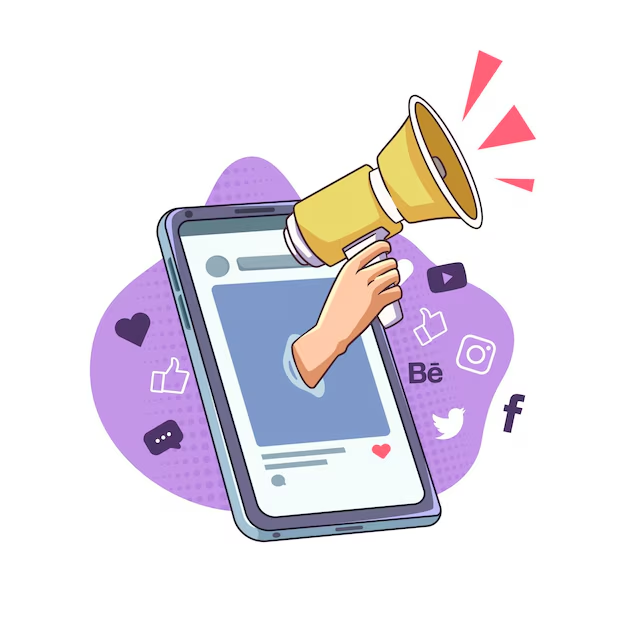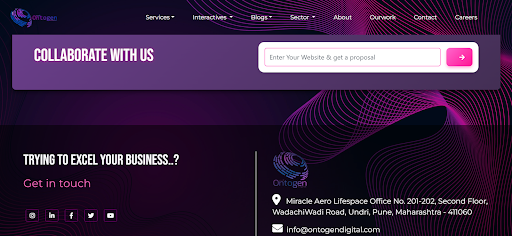19 Mar 2025 | By - Sudha Mariappan

You invest weeks creating the ideal marketing campaign.
Your ads are irresistible, your emails are interesting, and your social media updates are receiving clicks.
But when customers arrive at your site, they stall, get sidetracked, and abandon without converting.
Frustrating, right?
This is where a high-converting landing page is your secret weapon.
A homepage has many functions, but a landing page has only one.
In other words, to lead your visitors to a specific action, whether that is subscribing to a newsletter, downloading a free eBook, or purchasing something.
However, all landing pages are not created equal.
A sub-optimized page will push visitors away, while a strategically optimized page will drive your conversion rates sky-high.
So, how do you go about building a landing page that is both engaging and converting visitors into leads and buyers?
Let’s dissect it below!
What Is a Landing Page?

A landing page is a standalone web page that is built with the intent of marketing or advertising.
It is not a homepage, where there are several activities, but a landing page with one purpose of converting the visitors into leads or customers.
It is an instant link between your marketing campaign and audience, taking them to a specific action customized to your business needs.
Landing pages are applicable for many purposes, including email subscription collection, product launches, free trials, and others.
A good landing page eliminates unnecessary navigation components, keeping visitors focused on the desired action without distractions.
They also offer an opportunity to gather visitor data through lead forms, enabling businesses to construct their email lists and customer base for subsequent marketing campaigns.
Why Landing Pages Matter in Lead Generation?
Landing pages are necessary to get leads because they eliminate distractions and force the users to perform a desired action, i.e., subscribe to a newsletter, download an eBook, or purchase something.
Optimized properly, they significantly improve the conversion rate compared to normal web pages.
Additionally, landing pages allow businesses to track marketing performance.
By directing traffic from ads, social media, and email campaigns to designated landing pages, businesses can track visitor behavior, measure conversion rates, and optimize strategies for better results.
With a specific landing page, companies are also able to segment audiences better, providing targeted experiences that improve engagement and retention.
Read Also: Is your bounce rate increasing rapidly? Increase visitor engagement with Google Analytics and maximize conversions.
The Psychology Behind High-Converting Landing Pages:
Effectual landing pages also use psychological levers such as urgency, social proof, and scarcity to engage visitors.
Human beings respond positively to short, action-oriented language that focuses on rewards and minimizes risks.
Some of the working psychological strategies are:
- Urgency and Scarcity: Limited-time offers or countdown timers create a fear of missing out (FOMO), which triggers spontaneous decisions.

- Social Proof: Displaying people's reviews, testimonials, and trust badges will convince visitors to trust that others already took advantage of your offer.
- Clarity and Simplicity: Clean design and compelling copy allow users to make decisions without confusion.
- Reciprocity Principle: When businesses offer something of value for free (e.g., an eBook), users are in turn required to reciprocate by providing their contact information.
Key Elements of a High-Converting Landing Page:
Engaging Headlines That Grab Attention
Your headline is the first thing people see when they arrive. It has to be concise, concise and benefit-driven to attract them immediately.
A great headline addresses the pain points of the audience and provides a solution.
For instance, rather than using "Download Our Guide," a more effective headline would be
"Increase Your Sales in 30 Days, Get Our Free Expert Guide!"
This clearly conveys the value of the offer and sets expectations.
Persuasive Copy That Engages and Converts
Your landing page copy should resolve pain points, present solutions, and accentuate benefits.
Write in a persuasive tone and don't use jargon. Write directly to your audience, in a conversation-friendly tone that responds to their needs.
One basic formula for great copywriting is Problem → Solution → Benefit.
Begin by recognizing the pain point of the visitor, presenting your solution, and then highlighting the benefits of action.
Storytelling and personalization can also increase engagement, making the offer more meaningful to the visitor's needs.
Visuals and Layout
Visual materials like images, videos, and infographics drive more user engagement.
A well-structured, clean design facilitates readability and leads visitors to the CTA.
Quality product/service photos that showcase services in action enhance credibility and trust.
Videos perform optimally on landing pages as they are capable of explaining complex concepts quickly and interesting individuals more effectively than text alone.
Adding captions and transcripts makes it accessible to all.
Powerful Call-to-Action (CTA) for Highest Engagement
Your CTA needs to be concise, action-based, and visually prominent.
Statements such as "Get Started Now" or "Download Free Guide" are more effective than generic buttons.
Also, contrast colors and positioning can draw attention to your CTA and push extra conversions.
Designing Your Landing Page for Conversion
Making It Simple and Uncluttered
One clean design minimizes distractions and invites users to do something.
Clear out unnecessary elements that don't convert.
White space, bullet points, and short paragraphs make it more readable and engaging.
The Significance of Mobile Optimization
Over half of the traffic is mobile. Optimize your landing page to be mobile-friendly, responsive, and load quickly.
Google prefers mobile-first indexing, so sub-optimized pages can hurt search rank.
Test out your landing page on different sizes of screens to ensure a silky-smooth experience.

Using Social Proof and Trust Signals
Adding reviews, testimonials, trust badges, and case studies makes your page credible and convinces visitors that they are making the right decision.
Add real customer success stories to make your page relatable and convincing.
Case studies with measurable outcomes, like "Increased conversion rates by 75%", can be especially effective.
Best Practices for Lead Generation
Providing Valuable Lead Magnets
A lead magnet is an incentive, like a free eBook, checklist, or webinar, presented in return for a visitor's contact details.
Ensure your lead magnet is very targeted to your target audience and is of immediate value.
The more personalized and valuable the offering, the higher the conversion rate.
Minimizing Form Fields for More Conversions
Shorter forms have higher conversion rates.
Gather only essential information to reduce friction and drive sign-ups.
Testing shows that reducing form fields from five to three can increase conversions by up to 30%.
However, for high-value products, longer forms may be successful in lead qualification.
A/B Testing for Continuous Improvement
A/B Testing of Headlines, CTAs, Images, and Layouts
A/B testing decides what works and continues to improve the conversion rate.
Small changes, like button color or button text, can have a great impact.
Use heatmaps and analytics to monitor the path of visitors and adjust your page to maximize them.
Read Also: What is A/B Testing? How to Use A/B Testing to Improve Your Marketing Campaigns?
SEO Optimization of Landing Pages
Keyword Research
Use keywords in title tags, body content, and meta tags to search engine-optimize your webpage.
Do keyword research with tools such as Google Keyword Planner or Ahrefs to identify high-converting keywords.
Use long-tail keywords to get more qualified traffic.
Meta Tags, Headings, and URL Optimization
Make sure your title tag, meta description, and URL are SEO-optimized and contain your target keyword.
Optimized meta descriptions enhance click-through rates from search engine results.
Page Speed and User Experience Considerations
A slow page can result in high bounce rates. Optimize images, turn on caching, and use a good hosting provider.
Google's PageSpeed Insights tool can be used to identify areas for improvement.
Common Mistakes to Avoid
Not avoiding common mistakes while designing a landing page is as important as following best practices.
1. Overcomplicating the Design
An over cluttered, overly complex design will confuse visitors and make it harder for them to focus on the primary call-to-action (CTA).
If a landing page has too many colors, fonts, images, or animations, it will be distracting and overwhelming.
A plain and straightforward design, on the other hand, assures simplicity and readability.
How to fix this:
- Implement a plain, simple look with a clear visual hierarchy.
- Use 2-3 colors and one readable font.
- Leave enough white space to make the content more readable and interesting.
2. Unclear or Vague CTA
A generic, vague or out-of-place CTA will lead to lost conversions.
One such example is using buttons with the text "Submit" or "Click Here," as this does not imply a particular action or reward for the user.
How to correct this:
- Make the CTA an action verb and specific, such as "Get My Free Guide" or "Start Your Free Trial."
- Make your CTA button pop with contrasting colors.
- Place the CTA prominently above the fold and copy it elsewhere on the page to draw attention to it.
3. Mobile and SEO Optimization Ignoring
Given that much of web traffic is from mobile, a non-responsive landing page would be tantamount to high bounce rates.
Similarly, failing to optimize SEO is a surety your page will not rank high in search engines, meaning less organic traffic.
How to fix:
- Make the page mobile-friendly with a responsive design that adjusts for different screen sizes.
- Optimize images, eliminate unnecessary scripts, and have the page load quicker.
- Employ keywords from your content in titles, meta descriptions, and image alt text to boost search visibility.
By following these best practices, you will be able to create landing pages that effectively generate leads and drive conversions.
Continuous testing and tweaking will assist in refining your results over time.
Need more information? Subscribe to our website for more such blogs.
We provide expert digital marketing services, from graphic designing, video editing to social media marketing.
Connect with us at info@ontogendigital.com.
KEY TAKEAWAYS:
- Landing pages focus on a single goal – They eliminate distractions and guide visitors toward a specific action.
- Strong headlines and CTAs boost conversions – Clear, benefit-driven headlines and action-oriented CTAs improve engagement.
- Psychological triggers drive action – Urgency, social proof, and simplicity encourage visitors to convert.
- A/B testing is essential for optimization – Testing elements like CTAs, headlines, and images helps maximize results.
- Mobile optimization and SEO matter – Ensuring fast load times, responsiveness, and keyword optimization improves user experience and visibility.
FAQs
1. What is the ideal length for a landing page?
It depends on the offer. Short pages work best for simple conversions, while long-form pages perform better for high-ticket items.
2. How can I reduce bounce rates on my landing page?
Improve page speed, remove distractions, ensure mobile-friendliness, and align content with visitor intent.
3. What should I include in my CTA?
A strong CTA should be action-oriented, specific, and visually distinct, using phrases like “Get My Free Guide” or “Start Your Free Trial.”
4. Why is A/B testing important for landing pages?
A/B testing helps identify which design, copy, and CTA variations perform best, improving conversion rates over time.
5. How many form fields should I use for lead capture?
The fewer, the better. Asking for only essential information (e.g., name and email) increases conversion rates.
6. What role does social proof play in conversions?
Social proof, such as testimonials, case studies, and trust badges, builds credibility and reassures visitors about your offer.
7. How do I make my landing page SEO-friendly?
Use relevant keywords, optimize meta tags, improve page speed, and ensure a mobile-friendly design to rank higher in search results.